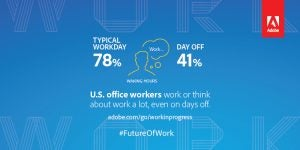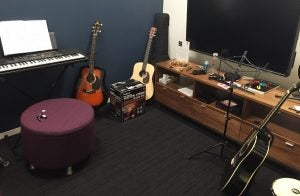The Class of 2016 Will Change the Workplace as We Know It Today

The composition of our workforce is on the verge of undergoing massive change. The majority of US-based employers plan to hire recent graduates in 2016 — and those employers include companies of every size and shape, from corporations in towering skyscrapers to small startups in hip lofts.
The sheer scale on which this class’s graduates are going to be hired hints that these digital natives are about to disrupt perspectives across industries in ways we’ve never seen before.
These new graduates bring a fresh set of expectations — not only about their work environments, but also about when and where they work, and about how they blend their work lives with their personal lives.
In the first blog of this three-part series, I talked about how the class of 2016 will change our perspectives on the people in our organizations — bringing a more energized feel to the office, and dissolving boundaries between work, social life, and play.
Now, in this second article of the series, I’ll explore how the class of 2016 will transform our concepts of the companies we work in, and the roles those companies play in the world.
Flexible timehttp://blogs.adobe.com/documentcloud/files/2016/06/298278_work_in_progress_infobits_800x400-02.jpg

In a fundamental sense, the class of 2016 define “workplace” differently than any generation before them.
Many of these new grads will work astonishingly hard — far harder than their older counterparts, including on weekends — for a company that allows them to come and go as necessary, instead of insisting they sit in a chair for eight hours every weekday.
The class of 2016 will expect work to fit into and around their lives. Some may prefer to work at night, and file their assignments before the morning workers arrive. Others may come into the office for face-to-face meetings, but get their core work done at home, or at a coffee shop, or in a park. Many would rather gig for multiple companies instead of working full time for just one — which will make it impossible to require them to “come to work” in the traditional sense.
Yet, while the majority of millennials perceive their generation as one that favors texting and email to face-to-face interaction, a recent Adobe survey found that a full 96 percent of millennials prefer to interact in person. But the space these workers interact in is more important to this new generation than to any before them.
Physical space
We’ve all seen examples of offices touted as “workspaces of the future” — Google’s colorful Palo Alto complex; Acuity’s amusement park with its rock-climbing wall and Ferris wheel. Based on examples like these, it’s easy to jump to the conclusion that recent graduates only want to work in offices filled with bright colors and fun toys — and that’s exactly the bandwagon that many startups have jumped on.
The truth is, though, that the class of 2016 simply want workspaces that make them feel like they’re part of a specific vision. The distinction between outward-facing marketing and inward-facing company culture is breaking down – younger employees want to be “sold” on the company culture every day via their experiences at the office, and they want to be able to represent that culture proudly in their interactions with customers.

http://blogs.adobe.com/documentcloud/files/2016/06/music-room.jpg
On my floor here at Adobe, for example, we’ve just had a music room installed, just in time for hundreds of college-age interns that’ll be arriving for the summer. This room is filled with all different kinds of instruments, and people are free to drop by any time during the day. A perk like this helps encourage creativity and play in the workplace – and it’s those values, more than just toys per se, that college-age grads are looking for in their workplaces.
Younger workers value personalized workspaces, too. The same Adobe survey found that 68 percent of these employees like to customize the areas where they work. Many actually want to help create the workspace, by contributing their own art, design ideas, and little personalized touches.
High percentages of millennials also want lounge and relaxation areas in the office, and access to on-site amenities – while a full 80 percent expect access to food and beverages in the office.
Sustainable goals
Innovative office spaces that are in sync with a company’s mission are one aspect of changing workplaces — but the class of 2016 expect forward thinking on a much deeper level, too.
Talk to the class of 2016 about a traditional career arc — advancing through the ranks, being rewarded with predictable pay raises, reaching the corner office, and eventually retiring with a gold watch — and you’ll get a lot of blank looks, along with quite a few disapproving ones.
The new generation of workers have their own dreams of progress — and those dreams hinge on the responsible behavior of the companies they work for. Our survey found that 59 percent of millennials say their job defines who they are – and a full 87 percent of millennials said they’d keep working at their current jobs even if they won the lottery. That said, more than any other age group, nearly 60 percent of millennials are motivated by the idea of making an impact on society.
Millennials also want their workplace to be involved with the local community. Some companies are commissioning murals and office artwork from local artists. Others are hosting local farmer’s markets, or bringing in food from local farms. And a growing number of companies are giving back, by organizing community outreach projects.
https://blog.adobe.com/media_67323a7c290abc1c187f1b2072e1df91d6a048a9.gif
So, before a new grad will sign on the dotted line, they’ll want to know how you’re working to build a future they want to live in, and how they can contribute. That doesn’t mean you have to be building rockets to the stars. In fact, if your company emphasizes greenness and sustainability — grounded in concrete steps, like offering them a workplace such as Adobe’s LEED Platinum certified offices — you’ve already got a foot in the door with this year’s graduates.
In all these ways and more, the class of 2016 will transform our views of workplaces. In the third and final article of this series, I’ll delve into what this new generation of workers means in terms of technology—the devices and platforms we use to get our work done. See you there.
—
Check out part 1 in this series, “The Class of 2016 Work Differently Than You Do. Is Your Company Ready?”
Watch a group of industry experts discuss the Future of Work in the latest Adobe Think Tank.